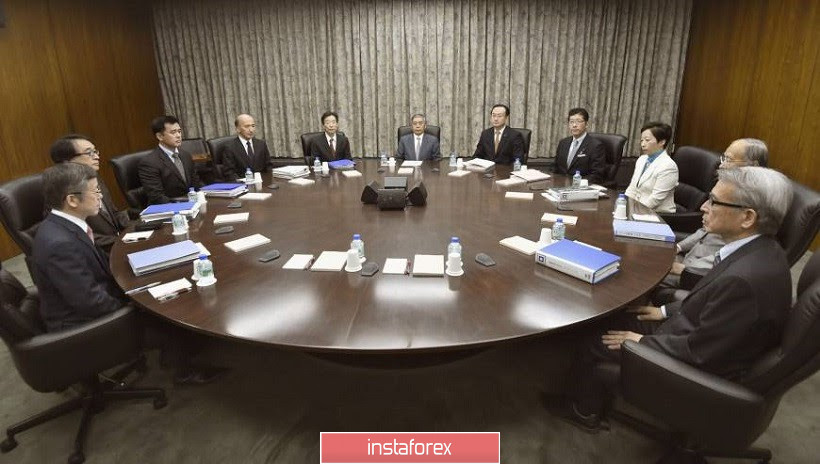The dollar-yen pair is still trading within the 107th figure. Rare attempts to leave the price range of 106.80-107.90 end in vain. One of these attempts was made last Friday, when USD/JPY bears tried to go below the lower price level against the background of another anti-record related to the coronavirus. But yesterday the pair returned, thereby, confirming their commitment to the flat movement. By and large, the pair has been trading in this mode for more than a month. The price fell from a three-month high of 109.86 on June 11, and since then, traders have been drifting around the 107th figure. Buyers or sellers occasionally manage to break out, but usually only for a few days. All this suggests that investors need a powerful informational reason to break through the price range, whereas today even coronavirus antirecords are actually ignored by USD/JPY traders.

Given this disposition, it can be assumed that the results of tomorrow's Bank of Japan meeting are unlikely to dramatically change the situation for the pair. Although the regulator can nevertheless present certain surprises, provoking increased volatility.
Firstly, BOJ Governor Haruhiko Kuroda has recently voiced very pessimistic comments, stating that the Japanese economy "is in an extremely difficult situation and is likely to continue to remain in this state for a long time to come." The head of the BOJ does not get tired of repeating that he and his colleagues "without hesitation" will soften the conditions of monetary policy, "if necessary." The Japanese central bank expanded the range back in July 2018, or rather, the limits of long-term interest rates - this allows the regulator to go deeper into the negative area at any meeting. However, the BOJ has additional levers of influence in its arsenal, in addition to lowering the interest rate.This is about increasing the volume of purchases of Japanese government bonds and increasing the monetary base - and judging by preliminary rumors, the regulator will announce further easing of monetary policy at tomorrow's meeting. In addition, many experts are confident that the BOJ will decide on a further review to lower forecasts for the economy and inflation.
Second, the July meeting will be the first with Seiichi Shimizu, who replaced Takeshi Kato as head of the Monetary Affairs Department. This is one of the key departments of the BOJ, where the strategic steps of the central bank are born and determined, which are subsequently discussed by the members of the board of governors. According to media reports, Shimizu has worked in the financial markets and currency operations department over the years. In the 90s, he was the head of the European direction of the central bank, as well as an official representative in London. Until his last appointment, he headed the Financial Markets Department, where he played a key role in implementing measures to ease market tensions caused by the coronavirus pandemic (in particular, the expansion of the BOJ's currency exchange lines with other central banks). In other words, Kuroda brought in a crisis manager whose task is to contain the negative impact of the coronavirus. We will find out exactly what steps Shimizu will use to solve this task in the near future.
It is also worth noting that in a quarterly report published last week, the Japanese regulator lowered its forecasts for the economy in all regions of the country. According to central bank economists, due to the epidemic in all prefectures of Japan, the situation is either getting worse or remains severe. This is another argument in favor of the dovish position of the BOJ.

Key macroeconomic reports are also not encouraging. For example, the general consumer price index repeated the April trajectory - the May indicator also found itself at around 0.1%. The consumer price index excluding fresh food prices was in the red zone, dropping to -0.2% (with a forecast decline to -0.1%). But core inflation (CPI excluding food and energy prices), on the contrary, came out in the green zone, surpassing experts' expectations. This indicator has grown to 0.4%, while it was expected to be at around 0.2%. But this nuance did not smooth out the generally negative impression, since inflation still remains weak.
Experts forecast disappointment regarding the growth of the Japanese economy. Analysts interviewed by Reuters said that Japan's GDP decline this fiscal year (ending at the end of April 2021) will be the highest in 10 years. According to survey participants, the economic downturn will be 5.3%.
Thus, the BOJ has every reason to announce new steps in the context of easing monetary policy. At the same time, most experts are confident that no decisions will be made at the July meeting – the central bank will only warn about a possible increase in asset purchases. Such rhetoric may weaken the Japanese currency, but it will not determine the upward trend of USD/JPY. This means that short positions can be considered when the pair approaches the ceiling of the 106.80-107.90 range. If the BOJ does not decide on concrete actions, the effect of the July meeting will be short-lived, which means that the yen will return to its usual course in any case.





















